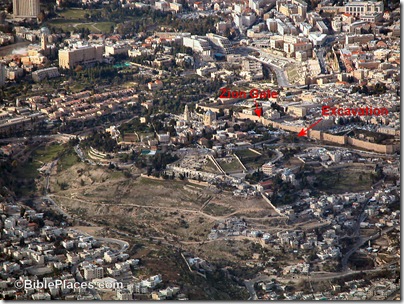I read this story yesterday in the Washington Times and ignored it, because I thought it was in error.
I’ve since seen it mentioned in blogs online as if the story was credible. Jay Bushinsky of the Washington Times begins his report:
An ancient inscription memorializing Jerusalem’s salvation from Assyrian invaders 2,700 years ago is to be returned to the Holy Land from Turkey for study and public display. Israel has been trying for about 20 years to recover the artifact, which marks one of the most important turning points in Hebrew history.
I think this story is bogus for the following reasons:
1. No one else is reporting this. I hardly think that the Washington Times knows something that no one else does. You can check online news sources easily by searching for “Siloam Inscription” at Google News (here is that link).
2. A story like this would be broken by the Israel Museum or a major government agency, and not only are they not mentioning it, the WT story does not cite them. The story is long, but the length is deceptive as only the first sentence mentions the return.
3. About a month ago, various news outlets reported some discussion of the matter. The essence of the story was that a Turkish official agreed to consider some sort of loan. In the Middle East, such “consideration” is a far cry from a decision. And a decision is very different than action. In other words, this isn’t “news” until the inscription is sitting in Jerusalem.
What I think happened is that this reporter read some of those stories too quickly and wrote an article based on a misunderstanding.
By the way, if you want to take a picture of the inscription, don’t wait until it comes to Jerusalem.
The Israeli authorities won’t allow it, I’m certain. You’ll do better to go visit it in Istanbul, where you can take pictures. Which is far better anyway, because there are so many great artifacts on display that won’t be coming to Jerusalem on loan. There would be a certain irony as well if the Siloam Inscription came to Jerusalem the next couple of years, as hundreds of the best archaeological finds in Israel are locked up out of sight of visitors.


